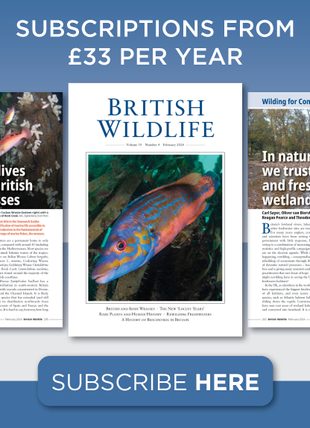![Tectonic Geomorphology of Mountains Tectonic Geomorphology of Mountains]()
Click to have a closer look
About this book
Contents
Biography
Related titles
About this book
This book explores how landscapes respond to tectonic deformation. Including much previously unpublished research and theory, "Tectonic Geomorphology of Mountains" uses new approaches to enhance theoretical models of landscape evolution and to solve practical problems such as the assessment of earthquake hazards. Readers will learn how to use key landforms as reference levels in changing landscapes, estimate rates of mountain-range uplift, and map seismic shaking caused by prehistorical earthquakes. Examples from around the world have been selected to illustrate diversity, from the humid Southern Alps of New Zealand with phenomenal rates of uplift and erosion to the semi-arid Panamint Range of southeastern California with so little annual stream power that tectonic landforms persist for millions of years.
With a balance of theory and practical applications, "Tectonic Geomorphology of Mountains" is essential reading for research geologists and upper-level undergraduate and graduate students in the earth sciences.
Contents
Preface1 Scrunch and Stretch Bedrock Uplift1.1 Introduction1.2 Pure Uplift, Stretch and Scrunch Bedrock Uplift 1.2.1 Isostatic and Tectonic Uplift1.2.2 Stretch and Scrunch Tectonics1.3 Landscape Responses to Regional Uplift2 Concepts for Studies of Rising Mountains2.1 Themes and Topics2.2 The Fundamental Control of Base Level2.2.1 Base Level2.2.2 Base Level Change2.2.3 The Base Level of Erosion2.2.4 The Changing Level of the Sea 2.2.5 Spatial Decay of the Effects of Local Base Level Changes2.3 Threshold of Critical Power in Streams 2.3.1 Relative Strengths of Stream Power and Resisting Power 2.3.2 Threshold-Intersection Points2.4 Equilibrium in Streams 2.4.1 Classification of Stream Terraces 2.4.2 Feedback Mechanisms 2.4.3 Dynamic and Static Equilibrium2.5 Time Lags of Response 2.5.1 Responses to Pulses of Uplift2.5.2 Perturbations that Limit Continuity of Fluvial Systems2.5.3 Lithologic and Climatic Controls of Relaxation Times 2.5.4 Time Spans Needed to Erode Landforms2.6 Tectonically-Induced Downcutting2.6.1 Straths, Stream-Gradient Indices, and Strath Terraces 2.6.2 Modulation of Stream-Terrace Formation by Climatic Changes2.7 Nontectonic Base-Level Fall and Strath Terrace Formation2.8 Hydraulic Coordinates3 Mountain Fronts3.1 Introduction3.2 Tectonically Active Escarpments 3.2.1 Faceted Spur Ridges3.2.2 Mountain-Piedmont Junctions3.2.3 Piedmont Forelands3.3 Fault Segmentation of Mountain Fronts 3.3.1 Different Ways to Study Active Faults 3.3.2 Segmentation Concepts and Classification3.3.3 Fault-Segment Boundaries 3.3.4 Normal Fault Surface Ruptures3.3.5 Strike-Slip Fault Surface Ruptures3.4 Summary4 Tectonic Activity Classes of Mountain Fronts4.1 Tectonic Setting of the North America-Pacific Plate Boundary4.2 Appraisal of Regional Mountain Front Tectonic Activity4.2.1 Geomorphic Tools For Describing Relative Uplift Rates4.2.1.1 Mountain-Front Sinuosity4.2.1.2 Widths of Valleys4.2.1.3 Triangular Facets4.2.2 Diagnostic Landscape Classes of Relative Tectonic Activity4.2.3 Regional Assessments of Relative Tectonic Activity4.2.3.1 Response Time Complications and Strike-Slip Faulting4.2.3.2 Maps of Relative Uplift4.3 Summary5 Fault Scarps5.1 General Features5.2 Scarp Morphology Changes with Time5.2.1 Changes in Scarp Height5.2.2 Decreases in Maximum Scarp Slope5.2.3 Diffusion-Equation Modeling5.3 Climatic Controls of Fault-Scarp Morphology5.4 Lithologic Controls of Fault-Scarp Morphology5.4.1 Fault Rupture of Different Materials5.4.2 Lithologic Controls on an 1887 Fault Scarp5.4.2.1 Geomorphic Processes5.4.2.2 Scarp Materials5.4.2.3 Scarp Morphology5.5 Laser Swath Digital Elevation Models5.6 Dating Fault Scarps with Terrestrial Cosmogenic Nuclides5.6.1 Alluvium5.6.2 Bedrock5.7 Summary6 Analyses of Prehistoric Seismic Shaking6.1 Paleoseismology Goals6.2 Earthquake-Generated Regional Rockfall Events6.2.1 New Zealand Earthquakes6.2.1.1 Tectonic Setting6.2.1.2 Background and Procedures6.2.1.3 Diagnostic Lichen-Size Peaks6.2.1.3 Tree-Ring Analyses6.2.1.5 Alpine Fault Earthquakes6.2.1.6 Recent Marlborough Earthquakes6.2.2 California Earthquakes6.2.2.1 Calibration of Lichen Growth Rates6.2.2.2 Recent Cliff Collapse6.2.2.3 Rockfall Processes in Glaciated Valleys6.2.2.4 San Andreas Fault Earthquakes6.2.2.5 Lichenometry and Precise Radiocarbon Dating Methods6.3 SummaryReferences CitedIndex
Customer Reviews
Biography
William B. Bull is an applied geologist educated at Colorado and Stanford Universities. He worked 12 years for the US Geological Survey as an engineering geologist and groundwater hydrologist. Studies of collapsing soils and land subsidence were quite appealing, but he changed career goals by moving to the University of Arizona where he taught geomorphology for 28 years. He continues to study landscapes of rising mountains from the perspective of earthquake hazards.



































